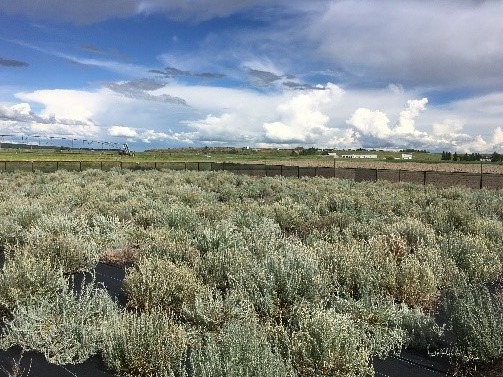While cattle producers mainly rely on introduced species of forage plants (such as alfalfa) to feed their animals, there’s growing interest in native species. If bison roamed the Prairies and relied on them for thousands of years, why not explore what they could do for cattle?
Dr. Sean Asselin at Agriculture and Agri-Food Canada’s (AAFC) Swift Current Research and Development Centre and his colleagues are working with native, perennial forage plants that have a proven track record in surviving the extremes of the prairie climate.
Natural synergies
For the beef industry, a key priority is for cattle producers to raise more beef with fewer resources – in part by reducing production costs and increasing feed efficiency. In an effort to increase forage and grassland productivity, AAFC’s research seeks to increase yields and nutritional quality of native perennial forage species through plant breeding, as well as to improve pasture, forage and grazing management techniques.
This is not only good for producers, but also for the ecosystem as a whole.
Rangeland or grassland plants provide ecosystem services (benefits to the biological community) that increase the resilience of the environment. These include fixing nitrogen in the soil (a benefit to farmers who then need to apply less in the form of fertilizer), sequestering carbon (storing it from the atmosphere) and providing feed and habitat for pollinators of other crops and soil stabilization, which leads to less runoff and better water storage capacity.
Native rangeland plants also increase the diversity of the plant community.
“Canadian grasslands are one of the most endangered ecosystems in the world,” notes Asselin. “Reintroducing native species and having animals on the land actually promotes biodiversity, as their grazing and trampling helps break up the plant canopy and allows other plant species to flourish.”
Benefits of native species – kings of adaptation
Traditionally, to pasture feed their cattle, beef producers have relied heavily on planted grass and legume species that have been introduced to Canada, such as alfalfa. While these non-native species have many beneficial aspects, they’re understandably not as well adapted to the harsh Canadian landscape as native species would be.
“Native grass species are inherently more resilient to changes in their environment. They’re more genetically diverse than many crops because of less stringent genetic selection over time. This diversity allows them to adapt to different environments, as some plants in the population will survive even under extreme conditions, such as prolonged periods of drought. Integrating these species into modern grazing and forage production systems could provide producers more stable production and pasture management in the face of a changing climate,” said Dr. Sean Asslein.
Over time, the Canadian rangeland has lost many native grass and legume species, so finding a seed source can be challenging. With permission from landowners, staff at AAFC have even gone into parks and roadside ditches to collect native plants, while always being mindful not to take endangered species. Propagation (reproduction) is another issue. As these species were never part of a breeding program before, there is a lot of work required to ensure the collected seed has good vigor (good germination prospects) and establishment characteristics.
As the only breeder of native forages at AAFC, Dr. Asselin is looking at the genetics of these species and how they interact with the environment. That is, he needs to make sure the materials are adapted to the local environment in which they will be planted – not all plants are created equal and can vary in how broadly or locally adapted they are. Understanding the genotype-environment interaction is key. Ultimately, Dr. Asselin’s team hopes to develop seed sources that can be as broadly adapted as possible, while also maintaining the genetic diversity of materials.
Forage plants native to the Canadian prairie grasslands provide a new feed opportunity for cattle producers, as well as ecosystem benefits that are good for the environment.
Dr. Asselin and his colleagues are studying breeding and integration of native plants into agricultural; systems the vigour of prairie legumes; landscape genomics in prairie clovers (signals of their genetic adaptation to climate); responses to drought and protein levels of different populations of native forage species relied on by historic Wood and Plains bison; and how to maintain germplasm (genetic material) on a natural landscape that is being grazed and mowed, as opposed to a controlled laboratory environment
